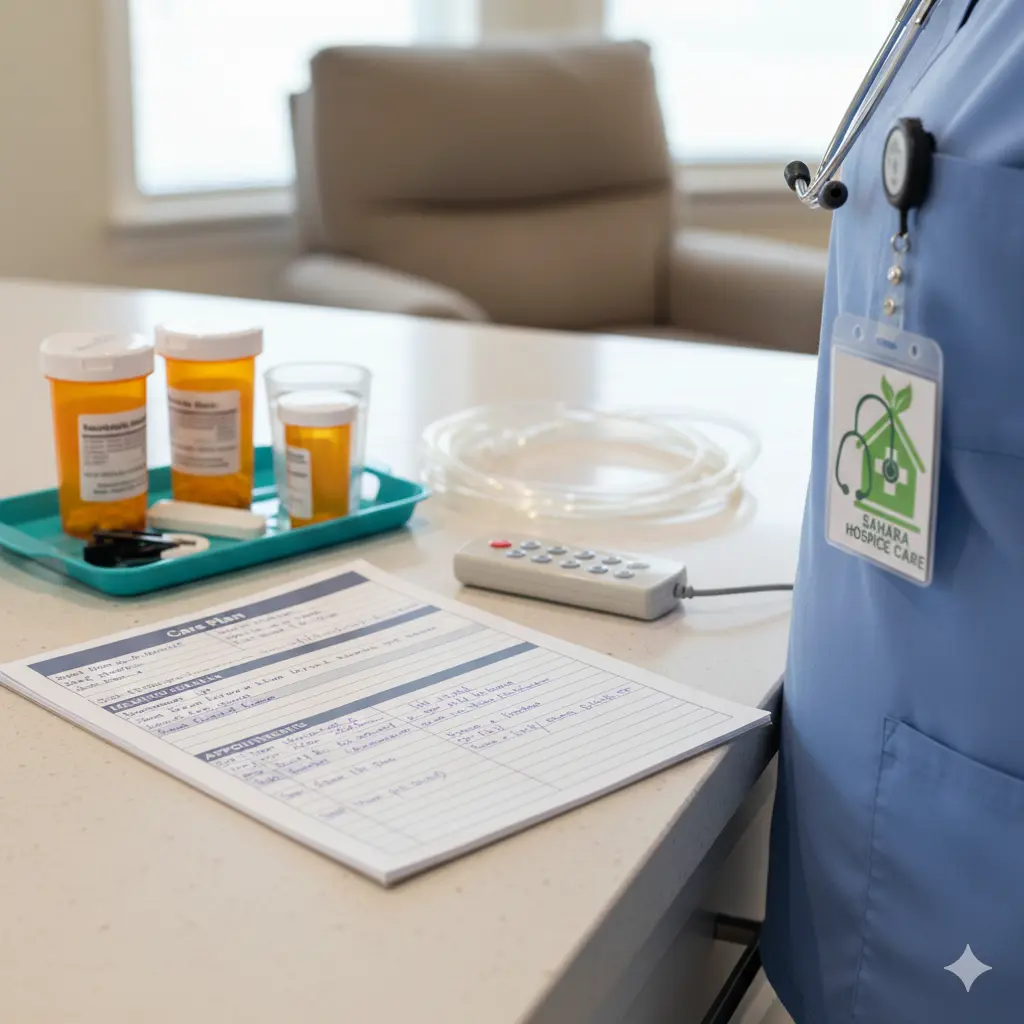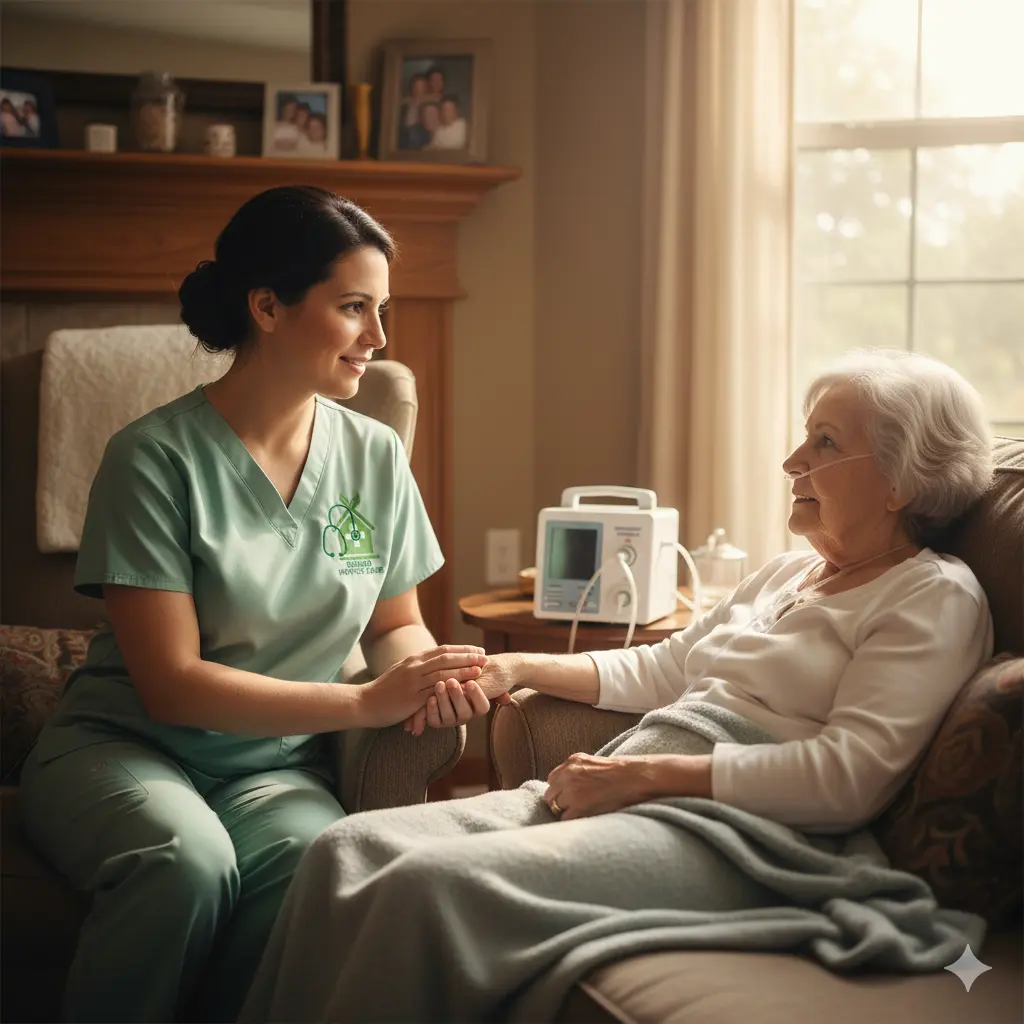Inpatient Hospice vs Home Hospice: Choosing the Right Level of Comfort Care
Inpatient hospice vs home hospice is one of the most common questions families face when choosing end-of-life support. Many patients in Sugar Land, Houston, and nearby communities can begin hospice within 24–48 hours after assessment. This guide helps caregivers, nurses, and DONs compare both settings so they can make the best decision based on safety, comfort, and clinical need.
- Home hospice: care in the patient’s home with scheduled nursing visits, on-call support, medications, and equipment.
- Inpatient hospice: 24/7 clinical care in a licensed facility for severe symptoms that cannot be managed safely at home.
What is inpatient hospice vs home hospice?
Hospice is comfort-focused support for people with a life expectancy typically measured in months. Home hospice delivers care in the patient’s residence—nurses visit regularly, medications and equipment arrive at home, and families stay closely involved. Inpatient hospice is for short-term symptom control when pain, breathing problems, agitation, or rapid decline become too difficult to manage at home. Medicare and many private insurers cover both levels of care.
Home hospice vs inpatient hospice: Key differences
Below are practical differences to help you decide quickly.
- Care intensity: Inpatient — continuous nursing and on-site clinicians; Home — scheduled nurse visits, plus 24/7 on-call support.
- Environment: Inpatient — clinical and structured; Home — familiar and family-centered.
- Medication & equipment: Home hospice arranges bedside delivery of meds, oxygen, and a hospital bed; inpatient gives immediate medication titration and monitoring.
- Family role: Home hospice keeps family as primary caregivers; inpatient shifts care responsibilities to the clinical team.
- Coverage: Medicare defines and may cover routine home care, continuous home care, general inpatient care, and respite care.
Why both options matter to caregivers and nurses
For clinical teams, choosing between settings depends on symptom severity, safety at home, caregiver capacity, and patient goals. Both levels collaborate so care can shift promptly when needed.
Benefits of inpatient hospice
– Fast stabilization during crises.
– 24/7 management of severe pain, shortness of breath, or delirium.
– Relief for exhausted caregivers.
Benefits of home hospice
– Maximum family presence.
– Personalized, familiar environment.
– Seamless coordination of meds, equipment, and emotional support.
Mini case studies
Case 1 — Home hospice (Sugar Land): Before: Mrs. R had frequent ER visits for uncontrolled pain and medication confusion. After: Within 72 hours of starting home hospice, her pain was stabilized, medication routines were structured, and ER visits stopped. Over 3 weeks, she spent meaningful time with family again.
Case 2 — Inpatient hospice (Houston): Before: Mr. K experienced sudden breathlessness, nighttime panic, and agitation; his spouse was overwhelmed. After: A 5-day inpatient stay provided continuous respiratory support and medication titration. He returned home with a clear plan and improved comfort.
How to choose — 5 practical steps
- Assess symptom severity: severe pain, breathing distress, or delirium often indicate inpatient care.
- Evaluate safety at home: consider fall risk and caregiver fatigue.
- Confirm insurance coverage and eligibility with the hospice team.
- Honor patient goals: comfort at home vs rapid symptom control in a facility.
- Use respite or short inpatient stays when caregiver health or safety is at risk.
Explore Sahara’s detailed service pages to learn more about setting-specific care: Skilled Home Hospice Services, Inpatient Symptom Management, or book a consult for a timely assessment.
For federal benefit rules, see the official Medicare hospice overview: Medicare — Hospice Care Coverage. This clarifies benefit levels and eligibility.

FAQ — People also ask
- Can a patient move from home hospice to inpatient hospice?
- Yes. If symptoms or caregiver strain escalate, the hospice team can arrange a short inpatient stay to stabilize the patient and then return them home when appropriate.
- Does Medicare pay for inpatient hospice?
- Yes. Medicare covers general inpatient care when medically necessary for symptom control and respite care to relieve caregivers, subject to benefit rules.
- How fast can hospice start?
- Many hospice teams start routine home services within 24–48 hours after an initial clinical assessment and paperwork, depending on need and authorization.
- Will hospice stop other treatments?
- Hospice focuses on comfort. Curative treatments for the terminal diagnosis are usually discontinued; care for unrelated conditions may continue per insurer rules.
- Who manages medications and equipment?
- The hospice interdisciplinary team coordinates prescriptions, durable medical equipment, and ongoing adjustments for both home and inpatient settings.
Ready to discuss next steps in Sugar Land or Houston?
Call Sahara In-Hospice Care to schedule a clinical assessment and arrange timely care — local bookings often available within 24–48 hours. Call: (281) 245-9977. Visit: 140 Eldridge Rd, Suite B1, Sugar Land, TX 77478. Email: info@saharahospicecare.com — or book a consult online.
Educational content only; follow your clinician’s individualized plan. Call 911 for emergencies.
Find Us on Google Maps
Author: Alan Jacob / Medical Writer. Last reviewed: .


